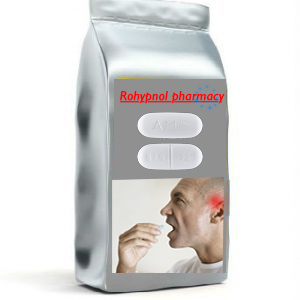Buy Actavis Oxymorphone Hydrochloride 40mg
Actavis Oxymorphone Hydrochloride 40mg extended-release tablets are for oral use and contain oxymorphone, a semi-synthetic opioid analgesic. Oxymorphone hydrochloride extended-release tablets are supplied in 5 mg, 7.5 mg, 10 mg, 15 mg, 20 mg, 30 mg, and 40 mg tablet strengths for oral administration. The tablet strength describes the amount of oxymorphone hydrochloride USP per tablet.
The tablets contain the following inactive ingredients: hypromellose, magnesium stearate, polyethylene glycol, polyvinyl alcohol, silicified microcrystalline cellulose, talc, and titanium dioxide. Additionally, the 5 mg, 10 mg, and 30 mg tablets contain iron oxide red. The 7.5 mg and 10 mg tablets contain iron oxide black. The 10 mg tablets contain iron oxide yellow. The 20 mg tablets contain FD&C Blue No. 1/Brilliant Blue FCF Aluminum Lake. The 40 mg tablets contain D&C Yellow No. 10 Aluminum Lake and FD&C Yellow No. 6/Sunset Yellow FCF Aluminum Lake.
The chemical name of oxymorphone hydrochloride is 4,5α-epoxy-3,14-dihydroxy-17-methylmorphinan-6-one hydrochloride, a white or slightly off-white, odorless powder, which is sparingly soluble in alcohol and ether, but freely soluble in water. The pKa1 and pKa2 of oxymorphone at 37°C are 8.17 and 9.54, respectively. The octanol/aqueous partition coefficient at 37°C and pH 7.4 is 0.98.
The structural formula for oxymorphone hydrochloride is as follows:

HOW TO USE OXYMORPHONE 40 MG ACTAVIS
Read the Medication Guide provided by your pharmacist before you start taking oxymorphoneand each time you get a refill. If you have any questions, ask your doctor or pharmacist.
Take this medication by mouth without food (at least 1 hour before or 2 hours after eating) as directed by your doctor, usually every 4 to 6 hours. If you have nausea, ask your doctor or pharmacist about ways to decrease nausea (such as lying down for 1 to 2 hours with as little head movement as possible).
The dosage is based on your medical condition and response to treatment. Do not increase your dose or use this drug more often or for longer than prescribed because your risk of side effects may increase. Properly stop the medication when so directed.
Pain medications work best if they are used as the first signs of pain occur. If you wait until the pain has worsened, the medication may not work as well.
If you have ongoing pain (such as due to cancer), your doctor may direct you to also take long-acting opioid medications. In that case, this medication might be used for sudden (breakthrough) pain only as needed. Other pain relievers (such as acetaminophen, ibuprofen) may also be prescribed. Ask your doctor or pharmacist about using oxymorphone safely with other drugs.
This medication may cause withdrawal reactions, especially if it has been used regularly for a long time or in high doses. In such cases, withdrawal symptoms (such as restlessness, watering eyes, runny nose, nausea, sweating, muscle aches) may occur if you suddenly stop using this medication. To prevent withdrawal reactions, your doctor may reduce your dose gradually. Consult your doctor or pharmacist for more details, and report any withdrawal reactions right away.
When this medication is used for a long time, it may not work as well. Talk with your doctor if this medication stops working well.
Though it helps many people, this medication may sometimes cause addiction. This risk may be higher if you have a substance use disorder (such as overuse of or addiction to drugs/alcohol). Take this medication exactly as prescribed to lower the risk of addiction. Ask your doctor or pharmacist for more details.


